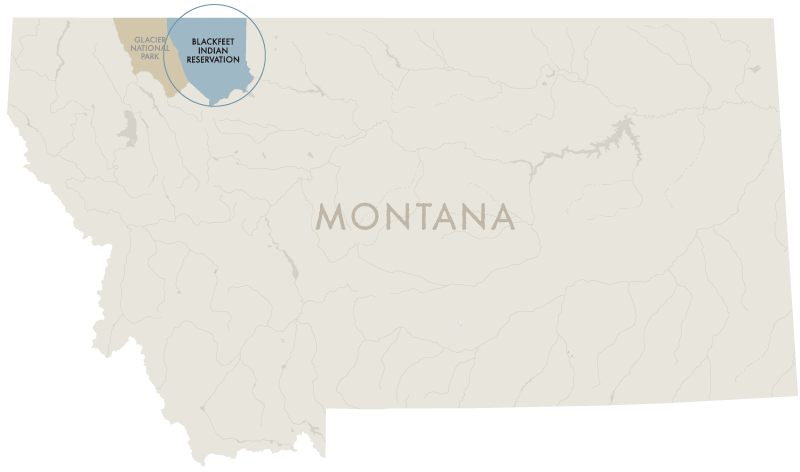 |
|
Where the endless plains are abruptly transected by the dramatic Rocky Mountains lies Blackfeet Country. A small community of people call this place home and this project is about the young people of that community. It is a glimpse into their world as they see and live it. Through my photographs, I want to show the triumphs and struggles that are unique to these youth. This photographic project explores the power of place and illustrates how the natural environment and the challenge of reservation life affect the child’s experience. The remote, yet expansive Blackfeet Reservation spreads over 3,000 miles from northwestern Montana into southern Alberta, Canada and borders Glacier National Park. While the reservation is larger than Delaware, there are fewer than four people per square mile. Long harsh winters and the inaccessible location isolate the reservation from the rest of Montana. It is also cut-off economically—there are no large businesses, little industry and haltingly few jobs with the exception of ranching and agriculture. The reservation has a 69% unemployment rate and a high dependency on welfare assistance. The basic infrastructure is also lacking: housing in insufficient, trash pickup is erratic, water and sewage systems are in a state of disrepair and many roads remain unpaved and scarred with potholes. These challenges unite the community and further strengthen family and neighborly bonds. A diverse population coexists on the reservation including enrolled members of the Blackfeet tribe, Blackfeet descendants who are not officially enrolled as tribal members, members of other tribes and other races. Unlike other Indian reservations in the West, the Blackfeet reservation is not closed. Approximately 15% of the population is non-native including many teachers. The proximity to the mountains attracts mountaineers as well as employees of the National Park Service. In the absence of material excess, the children’s imaginations flourish. Without tightly packed schedules of extracurricular activities or the latest video games, children are drawn outdoors to explore and adventure. There exists the purity of imaginative play—an intersection between raw nature and the developing mind of a child. Natural elements—snowflakes, sticks, rocks, animals and water—become toys, crowning these children the princes and princesses of the earth. These children have tremendous physical confidence, strength and a spirit of fearlessness. Youth race down pothole covered roads on bicycles, bounding from a trampoline onto a neighbor’s car, sledding down a hill at top speed in sub-zero temperatures and running barefoot through deep woods. The natural world has a deep and meaningful presence in a child’s life on the reservation; this is the land of their ancestors. Their windows look onto the same panorama; they walk the same trails, pick berries off the same plants and likely will be buried in the same soil as their great-great grandparents. Even non-native residents are deeply connected to the land and vast sky, the extreme weather and the power of the mountains. My goal in this body of work is to honor the enduring strength, resilience and wisdom of these youth. The project speaks to a universal childhood. To be young is to be free; to act from the essential self, before their bodies and thoughts become stifled by doubt, societal norms and judging peers. Children do not dwell on what is not; they are unburdened by the past or the future. They simply exalt in the present. |